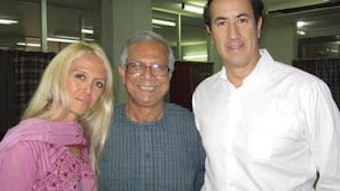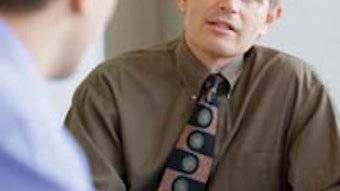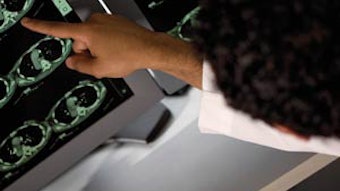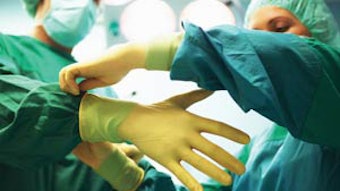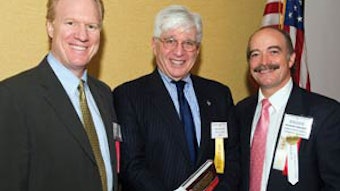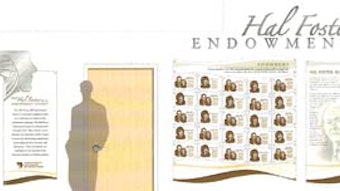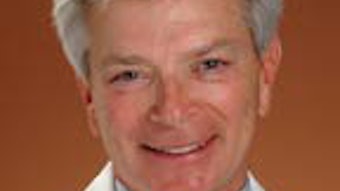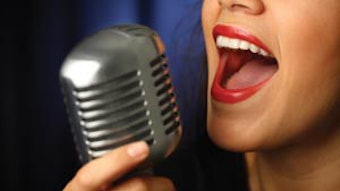Physicians Must Orchestrate Harmonious Care for Voice-Disordered Patients
April 16 has been set aside to recognize World Voice Day. This is a time to celebrate the gift of the human voice and is an opportunity for the AAO-HNS to highlight the efforts of clinicians, clinician scientists, and researchers who help to heal, improve, and protect the voices of our patients. Over the last three decades, laryngologists have developed a comprehensive approach to the treatment of voice- and swallowing-disordered patients. This approach has resulted in successful collaborations with our physician colleagues in specialties such as GI, pulmonary, and neurology, as well as with allied health professionals, such as speech pathologists. The evaluation and treatment of professional voice patients often requires that the physician work closely with vocal pedagogues, in both the private and university setting. Many times, patients with disorders of voice or swallowing will have tissue pathology that only a medical doctor is qualified to diagnose. At the same time, many patients will have functional voice or swallowing impairments that our speech pathology colleagues are trained to evaluate and treat. The orchestration of this complex symphony of vocal care is ultimately the responsibility of the otolaryngologist, who in essence is the conductor of care for our voice and swallowing patients. The various instruments in this orchestra are all vital to the care the patients deserve. The current world of healthcare reform will no doubt put additional pressure on the “maestros” of vocal care, but the need for continued direction from physicians is essential to ensure the best level of healthcare for our patients. The diagnosis of voice disorders must be performed by a physician. The Clinical Practice Guideline for Hoarseness (Dysphonia) published by the AAO-HNSF1 states that exams performed or reviewed by an otolaryngologist will ensure that diagnoses that are not treatable with voice therapy are managed appropriately. These conditions include squamous cell carcinoma or papilloma. The Guideline further states that a speech-language pathologist (SLP) trained in visual imaging may examine the larynx for the purpose of evaluating vocal function and planning appropriate therapy programs. In some practices that care for patients with voice disorders, such as ours at the University of Connecticut, the SLP works with an otolaryngologist and may perform a laryngeal exam that is reviewed by the otolaryngologist. These recommendations are consistent with the guidelines published by the American Speech-Language-Hearing Association. Our SLP colleagues are trained to evaluate and treat functional deficits in our patients with voice and swallowing disorders. In this role, they are invaluable to the care of these patients. However, the best patient care demands that a physician with the appropriate years of training in pathology, physiology, and medical and surgical care of this patient population be responsible for the diagnoses of these often complex cases. In their role as diagnosticians otolaryngologists can conduct the care of our voice patients, calling on the various instruments available for optimum patient care, to ultimately produce a symphony that results in consistently healthy voices. This is the goal desired by the entire voice community. The AAO-HNS, with the grassroots efforts of the Board of Governors, can provide the support the member societies need to guarantee we maintain our place on the “podium,” thus ensuring harmonious care of our patients with voice and swallowing disorders. Reference Clinical Practice Guideline: Hoarseness (Dysphonia). Otolaryngology Head and Neck Surgery (2009) 141: 3S2, S1-S31.
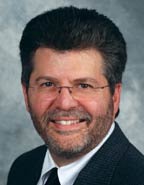 Denis C. Lafreniere, MD Professor and Chief, Division of Otolaryngology University of Connecticut Health Center Chair, BOG Socioeconomics and Grassroots Committee
Denis C. Lafreniere, MD Professor and Chief, Division of Otolaryngology University of Connecticut Health Center Chair, BOG Socioeconomics and Grassroots CommitteeApril 16 has been set aside to recognize World Voice Day. This is a time to celebrate the gift of the human voice and is an opportunity for the AAO-HNS to highlight the efforts of clinicians, clinician scientists, and researchers who help to heal, improve, and protect the voices of our patients.
Over the last three decades, laryngologists have developed a comprehensive approach to the treatment of voice- and swallowing-disordered patients. This approach has resulted in successful collaborations with our physician colleagues in specialties such as GI, pulmonary, and neurology, as well as with allied health professionals, such as speech pathologists.
The evaluation and treatment of professional voice patients often requires that the physician work closely with vocal pedagogues, in both the private and university setting. Many times, patients with disorders of voice or swallowing will have tissue pathology that only a medical doctor is qualified to diagnose. At the same time, many patients will have functional voice or swallowing impairments that our speech pathology colleagues are trained to evaluate and treat.
The orchestration of this complex symphony of vocal care is ultimately the responsibility of the otolaryngologist, who in essence is the conductor of care for our voice and swallowing patients. The various instruments in this orchestra are all vital to the care the patients deserve. The current world of healthcare reform will no doubt put additional pressure on the “maestros” of vocal care, but the need for continued direction from physicians is essential to ensure the best level of healthcare for our patients.
The diagnosis of voice disorders must be performed by a physician. The Clinical Practice Guideline for Hoarseness (Dysphonia) published by the AAO-HNSF1 states that exams performed or reviewed by an otolaryngologist will ensure that diagnoses that are not treatable with voice therapy are managed appropriately. These conditions include squamous cell carcinoma or papilloma.
The Guideline further states that a speech-language pathologist (SLP) trained in visual imaging may examine the larynx for the purpose of evaluating vocal function and planning appropriate therapy programs. In some practices that care for patients with voice disorders, such as ours at the University of Connecticut, the SLP works with an otolaryngologist and may perform a laryngeal exam that is reviewed by the otolaryngologist. These recommendations are consistent with the guidelines published by the American Speech-Language-Hearing Association.
Our SLP colleagues are trained to evaluate and treat functional deficits in our patients with voice and swallowing disorders. In this role, they are invaluable to the care of these patients. However, the best patient care demands that a physician with the appropriate years of training in pathology, physiology, and medical and surgical care of this patient population be responsible for the diagnoses of these often complex cases.
In their role as diagnosticians otolaryngologists can conduct the care of our voice patients, calling on the various instruments available for optimum patient care, to ultimately produce a symphony that results in consistently healthy voices. This is the goal desired by the entire voice community. The AAO-HNS, with the grassroots efforts of the Board of Governors, can provide the support the member societies need to guarantee we maintain our place on the “podium,” thus ensuring harmonious care of our patients with voice and swallowing disorders.
Reference
- Clinical Practice Guideline: Hoarseness (Dysphonia). Otolaryngology Head and Neck Surgery (2009) 141: 3S2, S1-S31.
